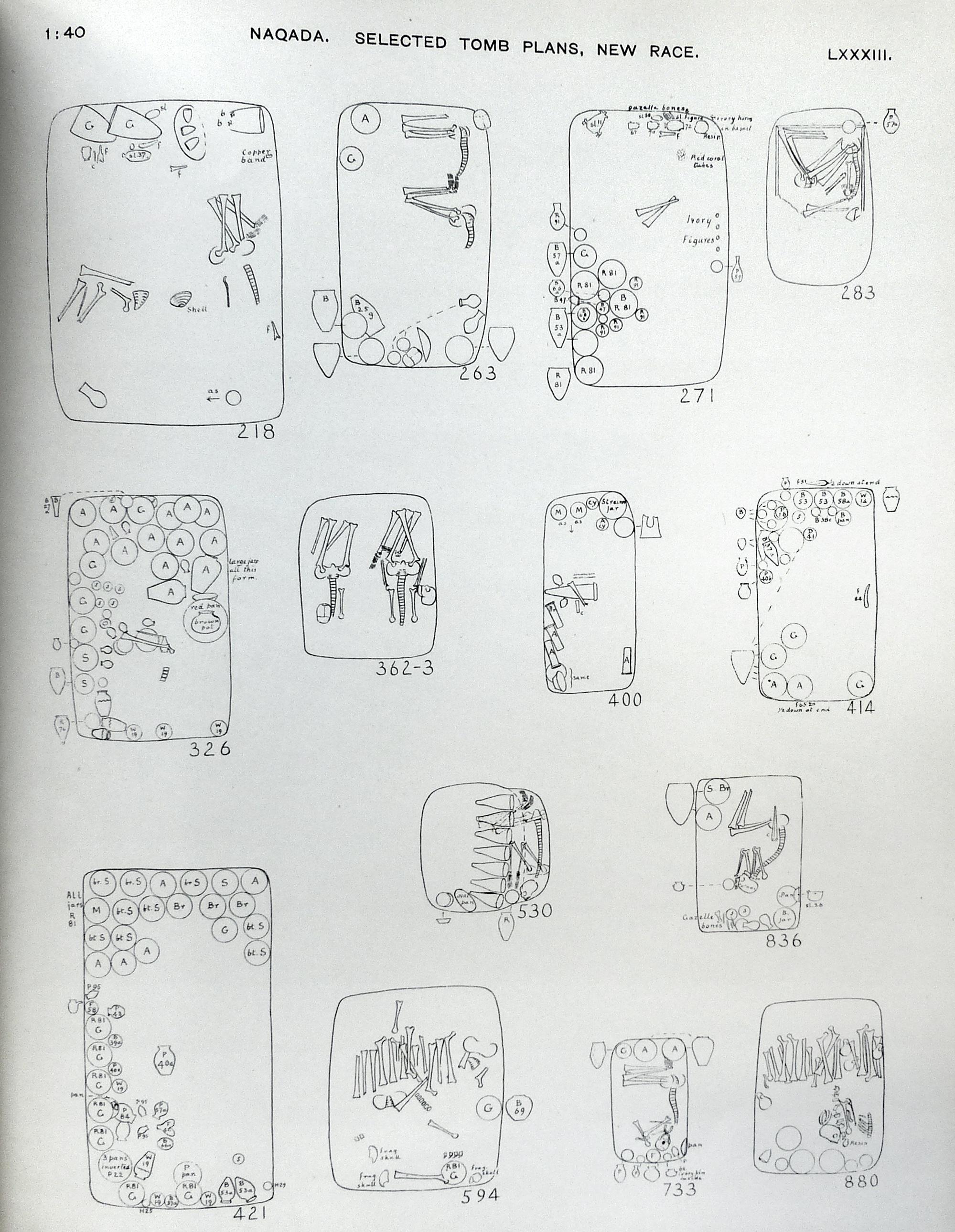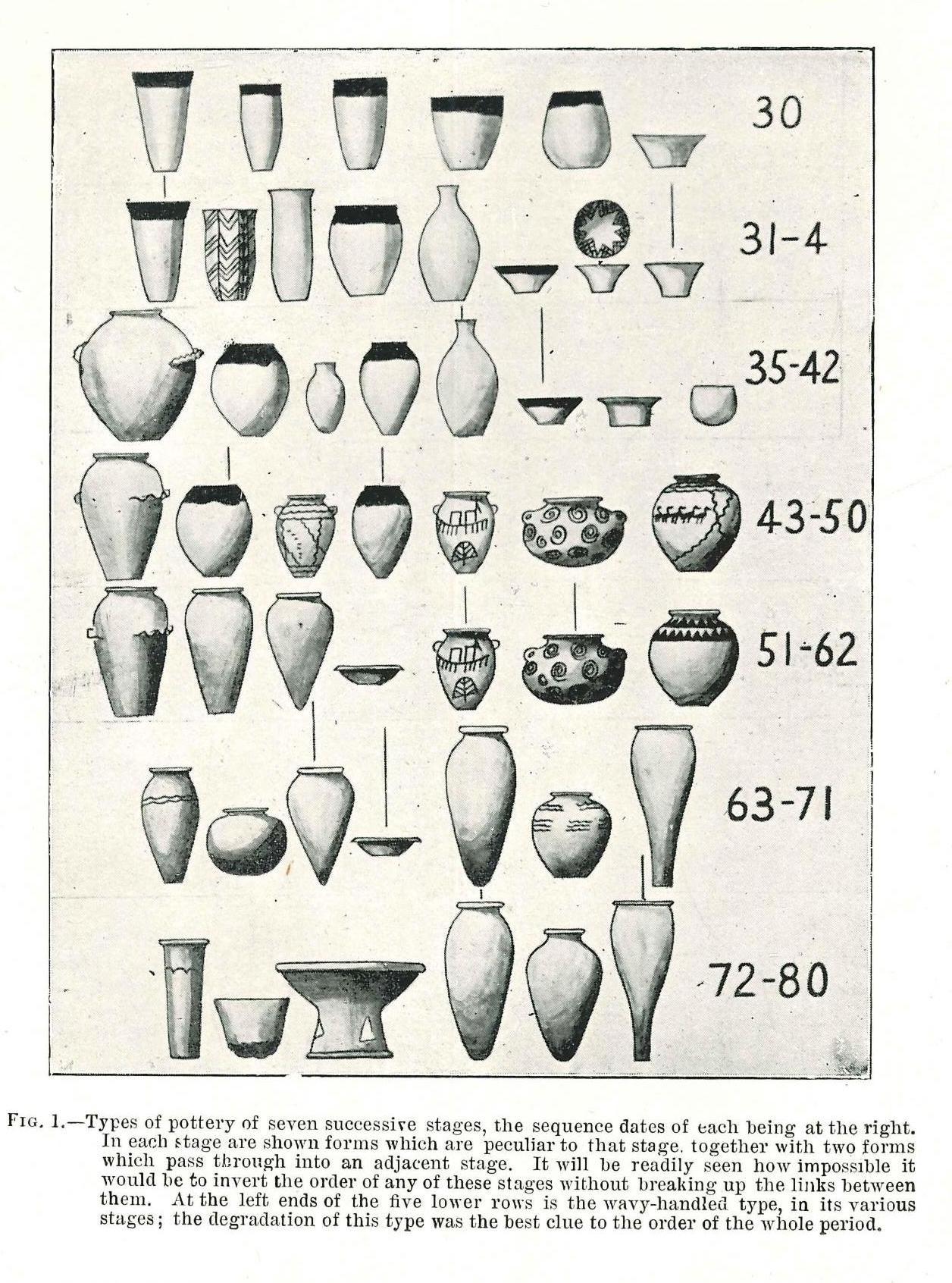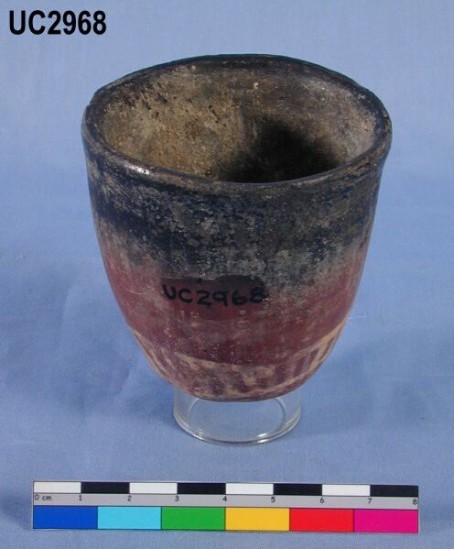In 1895, Egyptologist William Mathew Flinders Petrie (1853-1942) directed excavations at the ancient cemetery of Naqada, Upper Egypt, on behalf of the Egypt Exploration Fund. Children and foremen from the village of Quft (known as Quftis) excavated 2,200 graves. The human burials were different from anything previously excavated. The bodies were in a flexed position and buried with hundreds of pots described as ‘wholly un-Egyptian.’ Petrie proposed the pottery was evidence of a ‘new race’ that had invaded from Libya. He was soon corrected by French Egyptologist Jacques de Morgan (1857-1924) who argued the Naqada pottery was ‘predynastic’ and dated to a period before hieroglyphic writing.
Petrie initiated a systematic study of the ceramic assemblage. He had his field students draw the predynastic pots and then arranged the drawings in chronological order by tracing gradual changes in their form. The logical development of ceramic forms from simple to complex was informed by typological schemes developed in late-Victorian evolutionary anthropology. Petrie termed this relative dating technique sequence dating (archaeologists now call it seriation). It marked the first time Egyptologists used pottery alone to date prehistoric sites. Egyptologists still utilize Petrie’s predynastic chronology.

Petrie’s excavation report with his field assistant James Quibell featured these carefully recorded tomb plans of human burials in Naqada. The graves differed from anything previously excavated in Egypt. The bodies were not mummified nor buried flat, as was typical ancient Egyptian tradition. Instead they were placed in a flexed position on their side. Due to the unusual treatment of the bodies and the pottery buried alongside them, Petrie initially argued the cemetery belonged to a ‘New Race.’

An early example of Petrie’s sequence dating. Here Petrie arranged seven successive stages of pottery development featuring ‘wavy-handled ware,’ ‘black-topped red ware,’ and decorated pots. He noted that while the materials changed, the forms retained consistent characteristics, and were thus his key to dating predynastic culture in Upper Egypt.

